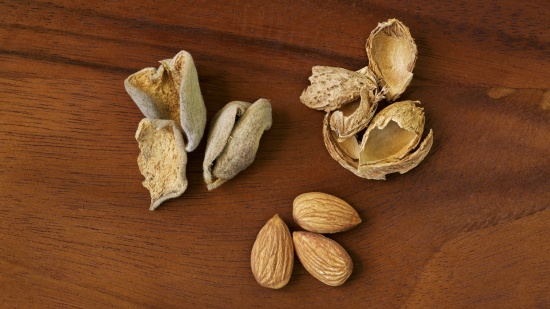The California Almond community is always innovating. At the 2017 Almond Conference, attendees got a preview of a new approach under investigation to control soil pests, improve soil health, and reuse almond coproducts. Almonds grow inside a shell, surrounded by a fuzzy outer hull – both of which are known as coproducts.
Christopher Simmons, PhD, researcher at UC Davis, and his colleagues are part of a research initiative funded by Almond Board of California’s (ABC) Almond Biomass Working Group. The team is conducting research trials in Butte County to determine if almond coproducts are compatible with the biosolarization approach and if this approach yields successful pest-control results.
Biosolarization is an alternative, all natural method to prepare soil before planting and replanting almond trees.1 If untreated, pests in the soil can feed on the newly planted trees’ roots, stunting their growth and their ability to take up water and nutrients. This biosolarization approach uses biomass/organic matter (almond hulls and shells), water, tarps, and the power of the sun to naturally deplete the soil of oxygen, making it inhospitable to key soil pests. Initial research suggests almond coproducts can play a key role in this.

Simmons’ team has found that almond hulls and a hull/shell mix are best at driving soil fermentation during the solarization process. When this approach is used, soil pests are killed within hours in the lab. Biosolarization with Nonpareil variety2 hulls eradicated pests below surface level and created the highest amounts of organic acids – the compound created through fermentation that kills the pests. It was also found that applying water during treatment can push the pest control effects much deeper.
To learn more about this promising new farming approach, check out this Western Farm Press article, Almond grower adding value back to orchards through biosolarization.
Other Uses of Almond Coproducts
For decades, the California Almond community has utilized almond coproducts in a responsible, sustainable fashion. Currently, the hulls are sold as nutritious dairy feed, the shells are used as livestock bedding, and the tree woody material can be used to create alternative energy. However, changing market for these products has led ABC to focus research investment on new uses. Coproduct research comes as almond production is growing, increasing the volume of hulls and shells produced, as well. This, combined with a variety of exciting new opportunities, is spurring interest in the uses of each almond coproduct across food, automotive, pharmaceutical, plastics and more.
When heated to high temperatures in the absence of oxygen, a process known as torrefaction, almond shells produce a charcoal-like product that can be used in several different ways including to strengthen and color biodegradable plastics for use as garbage bags, flower pots, and rubber tires. Adding torrefied shells to polypropylene can serve as an alternative to wood polymer composites used in decking and fencing materials, which also serves to strengthen the material. Research continues to explore both of these approaches.

Research has already shown that sugar can be extracted from almond hulls, which has potential applications as a food ingredient or a fuel. Once the sugar is extracted, spent hulls remain and ABC research is focused on exploring the ways to use this material, including a growing medium for mushroom cultivation and a feedstock for insect farming.
For more information on how the California Almond community is using almond coproducts, check out this infographic.